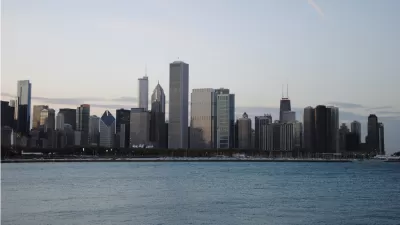Big cities saw the sharpest population declines during the pandemic. Is the trend here to stay?

With so much attention focused on the so-called exodus from big cities caused by the pandemic, research shows that "most big cities with populations exceeding 250,000 showed lower population growth in the year the pandemic began than in the previous year, and nearly one-third of them registered their lowest annual growth in the decade," writes William H. Frey for the Brookings Institution. "Still, only a few of these cities—mostly the nation’s largest—showed sharp population losses during the year COVID-19 began. Many of the others either continued population losses or slower gains that emerged earlier in the 2010s decade—or registered growth rises."
Big cities, by far, saw the greatest losses in population as people sought more affordable housing in outlying suburbs, helped along by the growing opportunities for remote work. This trend existed before the pandemic, but "large cities especially showed exceptionally slow or negative growth during the pandemic year."
"The most recent year’s city growth declines gave further impetus to the suburban growth advantage that took root midway in the 2010s decade. Earlier in that decade, a unique phenomenon emerged: a growth advantage for cities over their surrounding suburbs." But this short-lived advantage, "much of it attributable to the impact of the 2007-09 Great Recession and down housing market, which 'stranded' many young adult millennials in urban centers," has yielded back to the "broader suburbanization patterns that have been at work in most major metropolitan areas since the middle of the 2010s decade."
Whether or not the growth slowdowns precipitated by COVID-19 continue, writes Frey, "it is important to place them in the context of a 'shock' to an ongoing system of selective population dispersion that was established several years before the pandemic began—one that new generations of young adult movers may or may not choose to follow."
FULL STORY: America’s largest cities saw the sharpest population losses during the pandemic, new census data shows

Planetizen Federal Action Tracker
A weekly monitor of how Trump’s orders and actions are impacting planners and planning in America.

Maui's Vacation Rental Debate Turns Ugly
Verbal attacks, misinformation campaigns and fistfights plague a high-stakes debate to convert thousands of vacation rentals into long-term housing.

Restaurant Patios Were a Pandemic Win — Why Were They so Hard to Keep?
Social distancing requirements and changes in travel patterns prompted cities to pilot new uses for street and sidewalk space. Then it got complicated.

In California Battle of Housing vs. Environment, Housing Just Won
A new state law significantly limits the power of CEQA, an environmental review law that served as a powerful tool for blocking new development.

Boulder Eliminates Parking Minimums Citywide
Officials estimate the cost of building a single underground parking space at up to $100,000.

Orange County, Florida Adopts Largest US “Sprawl Repair” Code
The ‘Orange Code’ seeks to rectify decades of sprawl-inducing, car-oriented development.
Urban Design for Planners 1: Software Tools
This six-course series explores essential urban design concepts using open source software and equips planners with the tools they need to participate fully in the urban design process.
Planning for Universal Design
Learn the tools for implementing Universal Design in planning regulations.
Heyer Gruel & Associates PA
JM Goldson LLC
Custer County Colorado
City of Camden Redevelopment Agency
City of Astoria
Transportation Research & Education Center (TREC) at Portland State University
Jefferson Parish Government
Camden Redevelopment Agency
City of Claremont



























